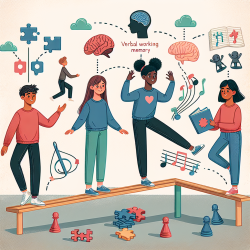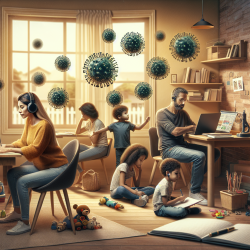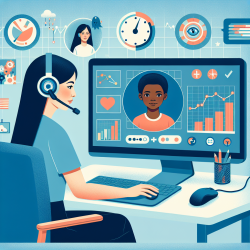Articulation therapy is a cornerstone of speech pathology, aiming to correct speech sound disorders in children and adults alike. The effectiveness of therapy depends significantly on the chosen treatment approach. Recent research by Johnson, Shelton, Ruscello, and Arndt (1979) provides valuable insights into two articulation treatments, offering a pathway for practitioners to enhance their therapy outcomes.
The study compared the effectiveness of two treatments: one focusing solely on the acquisition of correct sound production (Acquisition) and the other combining sound acquisition with automatization processes (Acquisition-Automatization), involving parents in the therapy process. The subjects were thirty-four children with misarticulation of the /s/ or /r/ sounds, divided into two groups to receive either of the treatments.
Key findings from the study indicate no significant difference in articulation improvements between the two treatment groups for sound production tasks or talking tasks. However, a notable improvement in articulation over time was observed for both groups combined. This suggests that while both methods are effective in improving articulation, the addition of automatization activities, even at the early stages of therapy, does not significantly outperform acquisition-only methods in the short term.
For practitioners, these findings underscore the importance of focusing on sound acquisition techniques and suggest that the integration of automatization activities can be introduced simultaneously without waiting for mastery in isolated sound production. Moreover, the involvement of parents in the automatization process highlights the potential for creating a more immersive and consistent therapy environment, although its direct impact on accelerating therapy outcomes warrants further investigation.
The study also emphasizes the variability in individual responses to therapy, suggesting that a personalized approach, possibly incorporating both methods as needed, may be more effective. Practitioners are encouraged to consider the characteristics and needs of each child, including their learning pace and the presence of supportive environments for practice outside of therapy sessions.
Practitioners looking to implement these findings into their therapy sessions should consider:
- Starting automatization activities early in the therapy process alongside acquisition techniques.
- Engaging parents or caregivers in the therapy process to extend practice beyond clinical settings.
- Monitoring individual progress closely to tailor the therapy approach, potentially combining methods for optimal outcomes.
Ultimately, the choice of therapy method should be guided by the individual needs of the child, the specific articulation challenges they face, and the resources available for therapy. This study contributes to the growing body of research in speech pathology, offering practitioners evidence-based insights to refine their therapy approaches for better outcomes.
For practitioners keen on further enhancing their articulation therapy skills and outcomes, delving deeper into the nuances of acquisition and automatization treatments can be invaluable. Encouraging further research and continuous professional development can only serve to enrich the field of speech pathology, ensuring that individuals with speech sound disorders receive the most effective and personalized therapy possible.
To read the original research paper, please follow this link: A Comparison of Two Articulation Treatments: Acquisition and Acquisition-Automatization.










